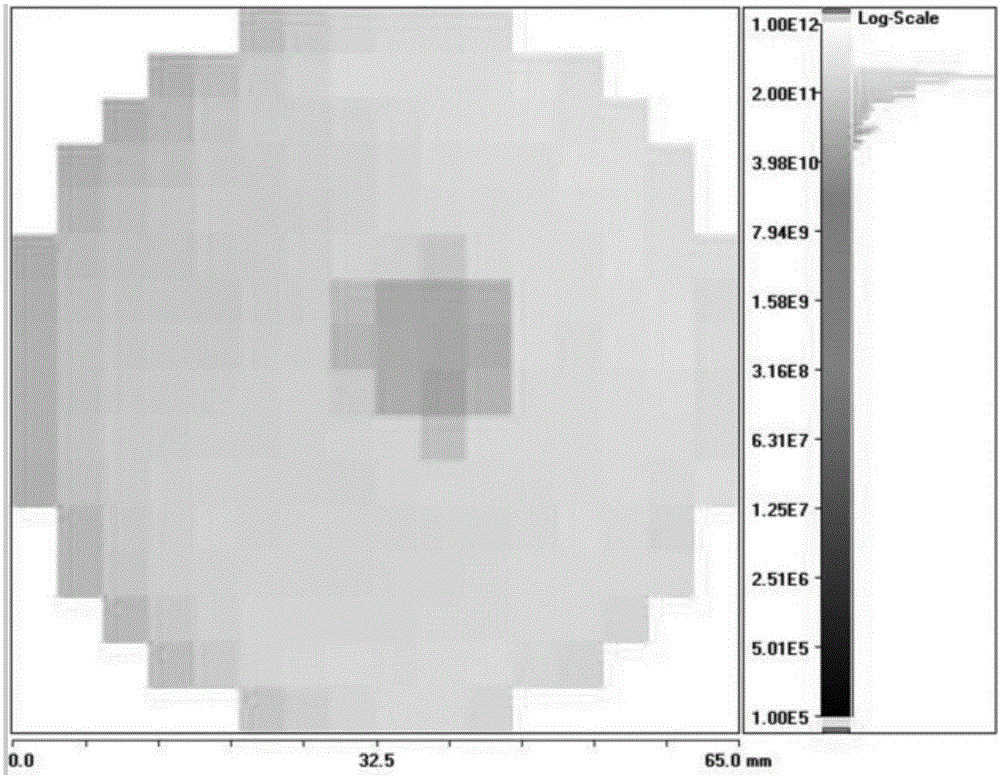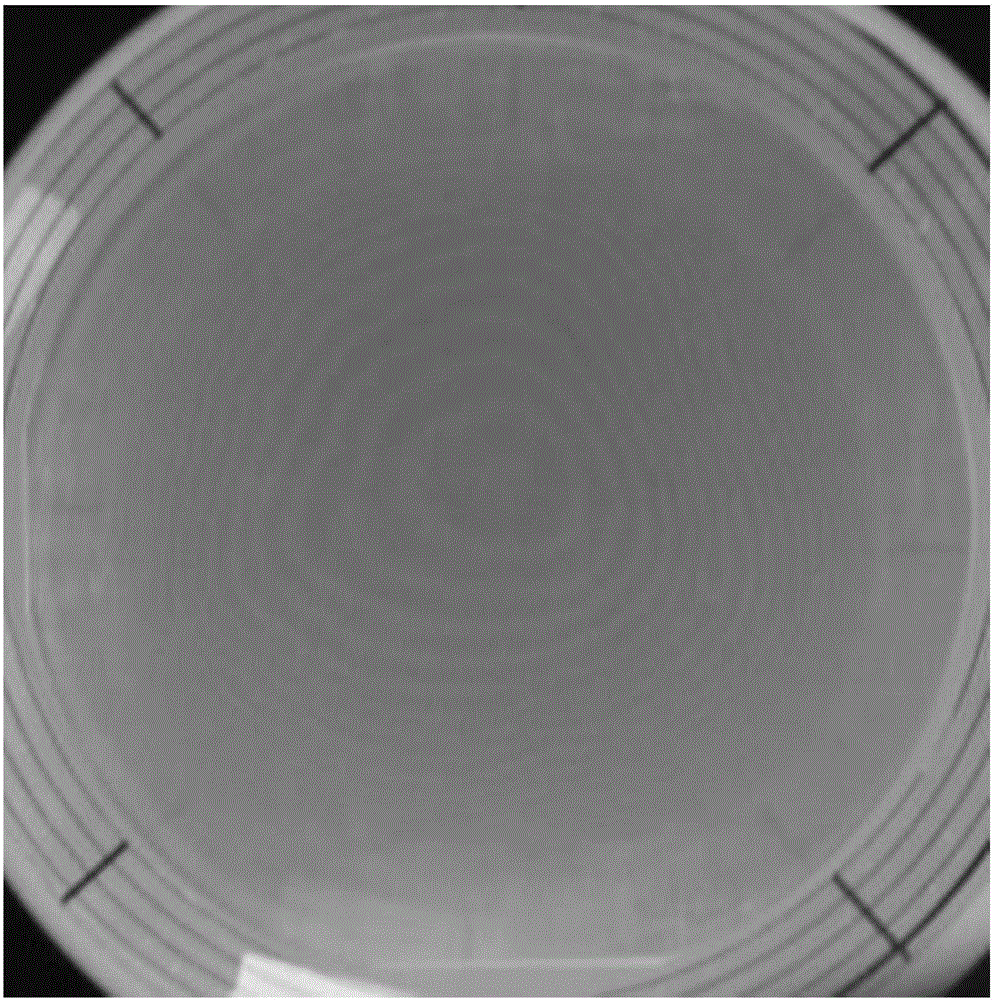Preparation method of low-stress and high-purity semi-insulating SiC single crystal
A low-stress, single crystal technology, applied in the direction of single crystal growth, single crystal growth, chemical instruments and methods, etc., can solve the problem of large overall equipment investment, and achieve low equipment investment, low micropipe density, and small crystal stress Effect
- Summary
- Abstract
- Description
- Claims
- Application Information
AI Technical Summary
Problems solved by technology
Method used
Image
Examples
Embodiment 1
[0053] A method for growing a low-stress high-purity semi-insulating SiC single crystal, the steps are as follows:
[0054] Step 1: Synthesis of high-purity SiC powder
[0055] (1) Put the thermal insulation material of the synthetic material into the growth furnace for pretreatment, heat it to 1800°C, keep it warm for 5 hours, and then slowly lower it to room temperature. Repeat 2 times in a row to ensure that the boron in the heat preservation is no longer released in subsequent synthetic material furnaces, so as to prevent boron impurities from melting into the SiC powder.
[0056] (2) Mix high-purity silicon powder and carbon powder evenly in a molar ratio of 1:1, put them in a graphite crucible with a coating on the surface, and seal the crucible. Put the crucible, insulation material, etc. into the growth chamber, and seal the furnace mouth.
[0057] (3) Vacuumize the growth chamber for 15 hours to make the vacuum degree reach 10 -5 After Pa, raise the temperature to ...
Embodiment 2
[0075] A method for growing a low-stress high-purity semi-insulating SiC single crystal, as described in Example 1, the difference is that
[0076] Step 1: Synthesis of high-purity SiC powder
[0077] The pretreatment temperature of the heat preservation material is 1900°C, and after 10 hours of heat preservation, it is slowly lowered to room temperature. Vacuum the growth chamber for 5 h to make the vacuum degree reach 10 -4 Pa, raise the temperature to 1000°C, continue vacuuming for 10 hours, and make the vacuum degree reach 10 -4 After Pa, increase the temperature to 1500 degrees, and continue vacuuming for 10 hours to make the vacuum degree reach 10 -4 Pa. Then, a mixed gas of argon and hydrogen was introduced, the pressure was 900 mbar, and the temperature was raised to 1800° C. for synthesis, and the synthesis time was 10 hours.
[0078] Step 2: Crystal Growth
[0079] The pretreatment temperature of the insulation material is 2400°C, and the insulation is kept for ...
Embodiment 3
[0082] As described in Example 1, each step operation is as described in Example 1, the difference is:
[0083] Step 1: Synthesis of high-purity SiC powder
[0084] The pretreatment temperature of the heat preservation material is 1850°C, and after 8 hours of heat preservation, it is slowly lowered to room temperature. Vacuum the growth chamber for 8 hours to make the vacuum degree reach 5×10 -5 Pa, raise the temperature to 950°C, continue vacuuming for 15 hours, and make the vacuum degree reach 5×10 -5 After Pa, increase the temperature to 1400 degrees, and continue vacuuming for 15 hours to make the vacuum degree reach 5×10 -5 Pa. Then, a mixed gas of argon and hydrogen was introduced, the pressure was 850 mbar, and the temperature was raised to 1600° C. for synthesis, and the synthesis time was 8 hours.
[0085] Step 2: Crystal Growth
[0086] The pretreatment temperature of the insulation material is 2300°C, and the insulation is kept for 8 hours. Pretreatment of hig...
PUM
| Property | Measurement | Unit |
|---|---|---|
| diameter | aaaaa | aaaaa |
| electrical resistivity | aaaaa | aaaaa |
| electrical resistivity | aaaaa | aaaaa |
Abstract
Description
Claims
Application Information
 Login to View More
Login to View More - R&D
- Intellectual Property
- Life Sciences
- Materials
- Tech Scout
- Unparalleled Data Quality
- Higher Quality Content
- 60% Fewer Hallucinations
Browse by: Latest US Patents, China's latest patents, Technical Efficacy Thesaurus, Application Domain, Technology Topic, Popular Technical Reports.
© 2025 PatSnap. All rights reserved.Legal|Privacy policy|Modern Slavery Act Transparency Statement|Sitemap|About US| Contact US: help@patsnap.com


